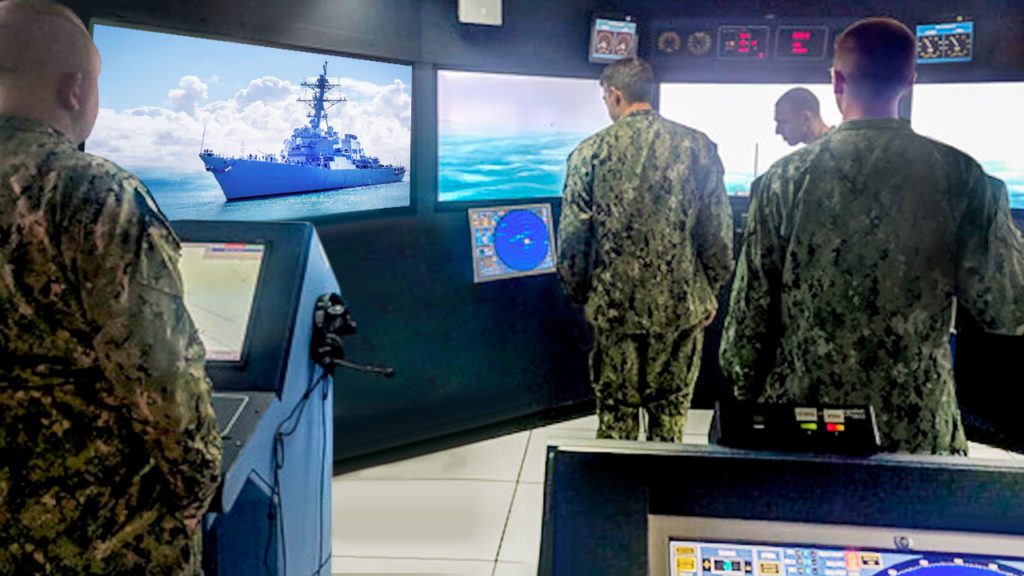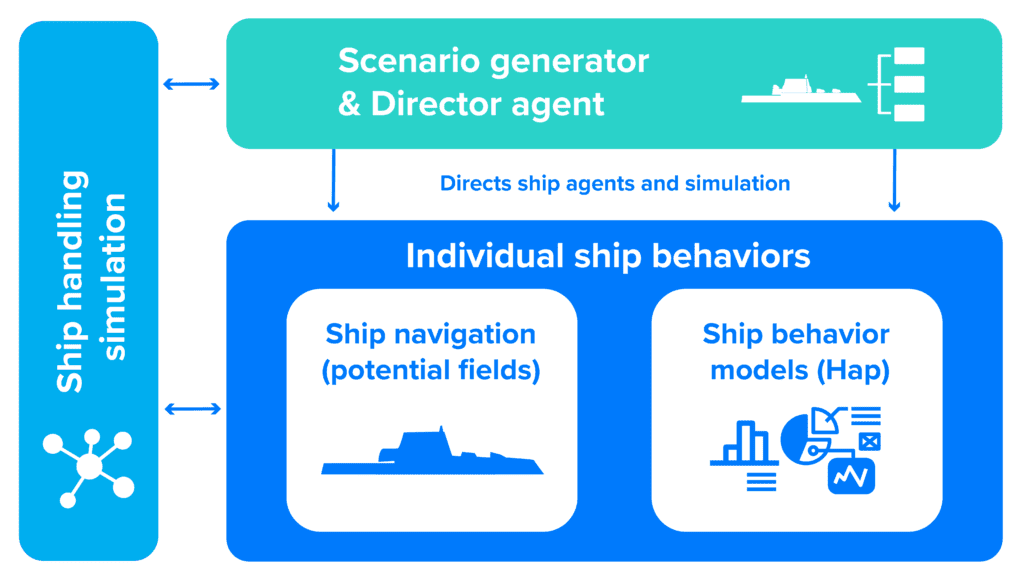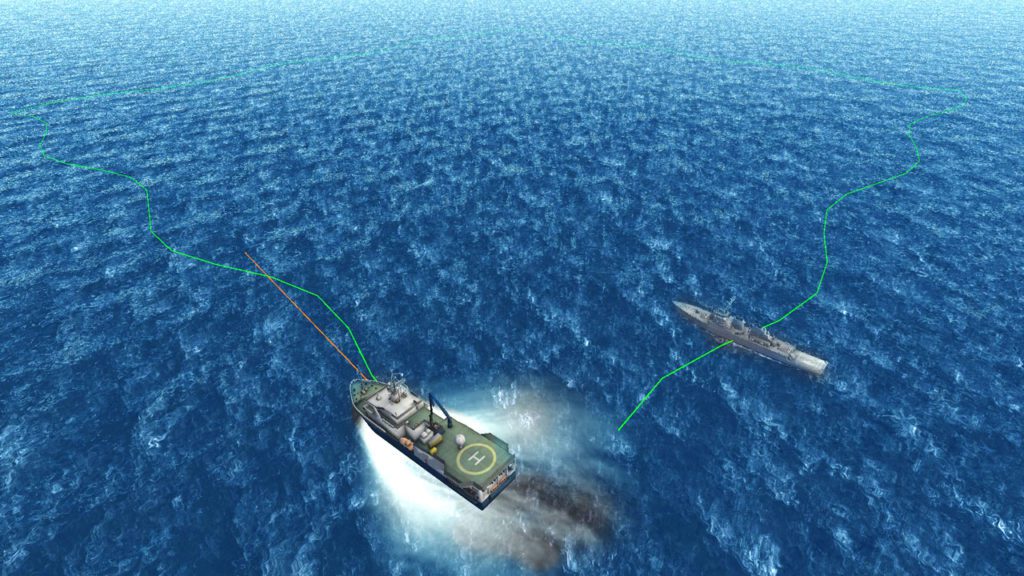
A virtual marine navigation training system
A virtual marine navigation training system
Intelligent virtual training materials
Along with the University of Nevada, Reno, Charles River Analytics is developing an intelligent tutoring system (ITS) that improves the navigation, seamanship, and ship-handling skills of the US Navy’s Surface Warfare Officers (SWOs).
The prototype tool, Mentoring and Responsive Learning through Intelligent Nautical Skill-modeling, Prompting, Intervention, and Feedback during Independent Exercises (MARLINSPIKE), enables virtual training that allows SWOs to practice a wide range of scenarios where they navigate crowded waterways and improve their ship-handling skills, and it is part of the KWYN® platform of products.

“What we would like to do is automate pieces of the simulations and then improve overall ability to give feedback, so the trainee receives more training scenarios at a reduced cost.”

Dr. James Niehaus
Principal Scientist and Principal Investigator on KWYN® MARLINSPIKE
While the Navy does have a suite of multiple virtual environments it uses for this purpose—including the Navigation, Seamanship, and Ship-handling Trainers (NSSTs)—master mariners still carry out the bulk of the training work. Complicated training scenario creation and execution depend considerably on human expertise. Scenario developers need to replicate real-life challenges and select and place a variety of ships with set waypoints and navigation controls for the ships.
“Simulations that already exist are difficult to configure and difficult to execute, so they require a lot of personnel to run a training simulation,” explained Dr. James Niehaus, Principal Investigator on KWYN MARLINSPIKE. As a result of these many complexities, the number of simulation scenarios is limited and SWOs train on the same few exercises over and over again. KWYN MARLINSPIKE hopes to add more variations in the exercises to overcome this problem.
KWYN MARLINSPIKE is an adaptive training toolset, one of the technical specialties of Charles River Analytics. “Adaptive training does two things: First, it decreases the training time needed, so it saves time and cost. And second, it improves the effectiveness of the training, so the outcomes are better,” Dr. Niehaus says.
KWYN MARLINSPIKE is expected to deliver more realistic and nuanced automated ship behaviors, freeing human operators for other tasks, and the adaptive training scenarios will better meet individual trainee needs.

The recommended KWYN MARLINSPIKE prototype
includes four components:
- A scenario generation and director agent that uses search-based experience management to project potential training outcomes and plan training scenario elements
- A ship behavior engine using the Hap-reactive planning architecture that makes realistic and reactive high-level decisions for each ship
- A ship movement controller using navigation based on Potential Fields that smoothly and efficiently guides ships to their waypoints
- An enhanced “rules of the road” ship-handling simulation
In addition to use by the Navy, KWYN MARLINSPIKE offers a solution for commercial shipping companies looking to add another resource to their existing suite of training programs. Charles River Analytics expects to license the underlying technology to a wide range of entities in the nautical operations space to enhance the functionality and effectiveness of their training systems. More broadly, the eLearning and game-based learning markets are also natural commercialization targets for this adaptive instructional tool.

Contact us to learn more about KWYN MARLINSPIKE and our capabilities in adaptive intelligent training.
This material is based upon work supported by the Office of Naval Research under Contract No. N68335-23-C-0151. Any opinions, findings and conclusions or recommendations expressed in this material are those of the author(s) and do not necessarily reflect the views of the Office of Naval Research.
On the job, the KWYN® AI platform augments skills through intelligent guidance and coaching.
